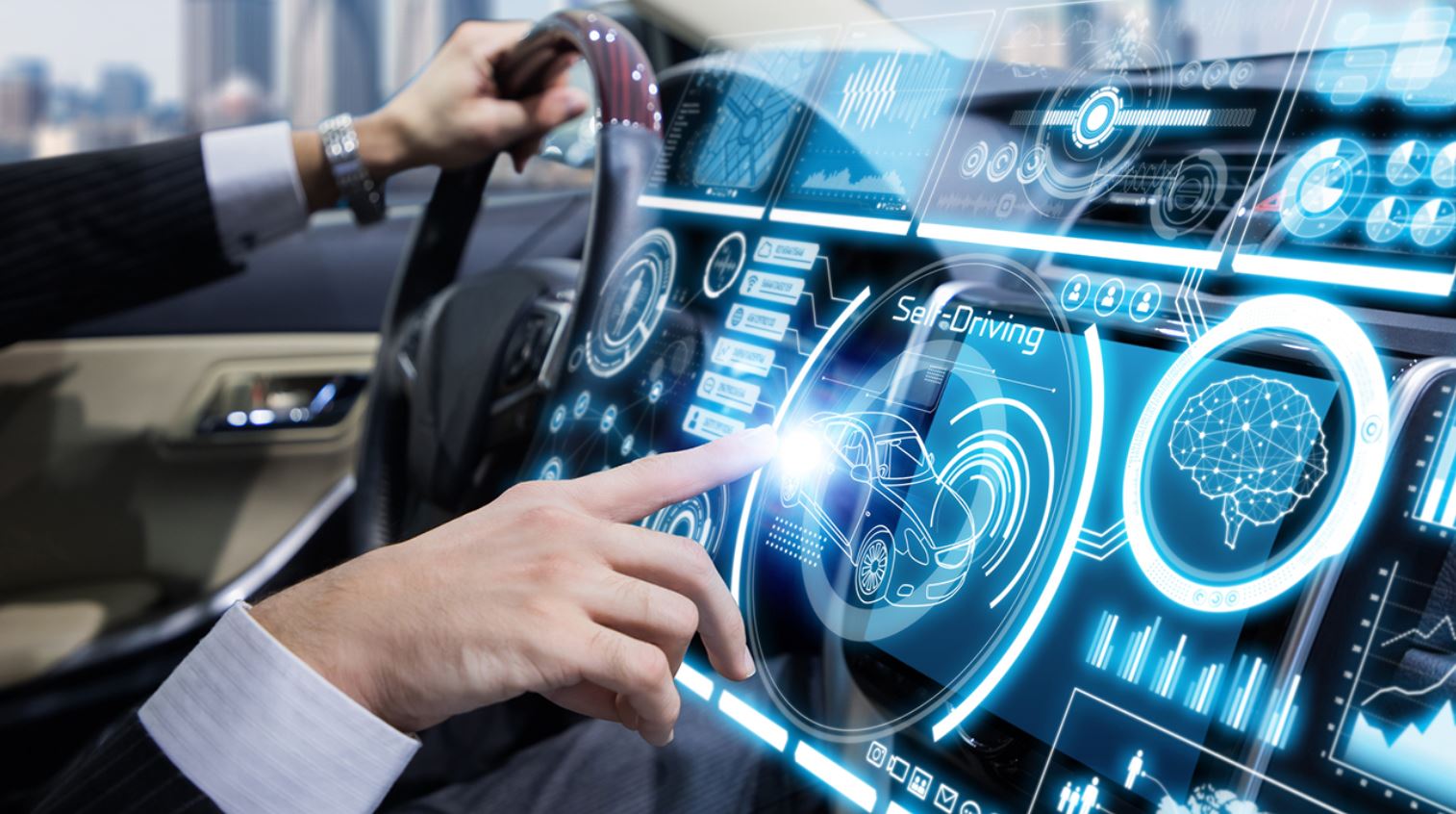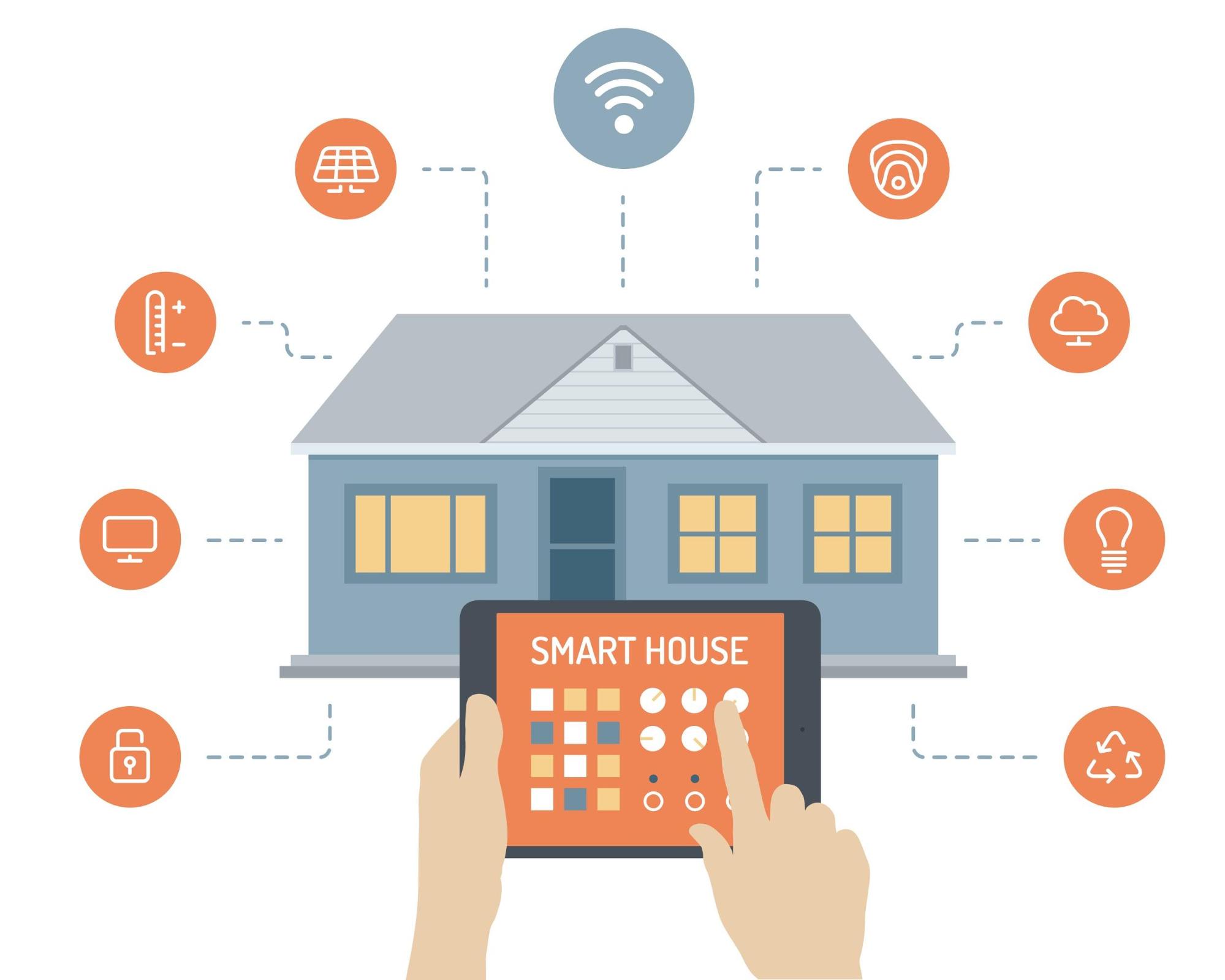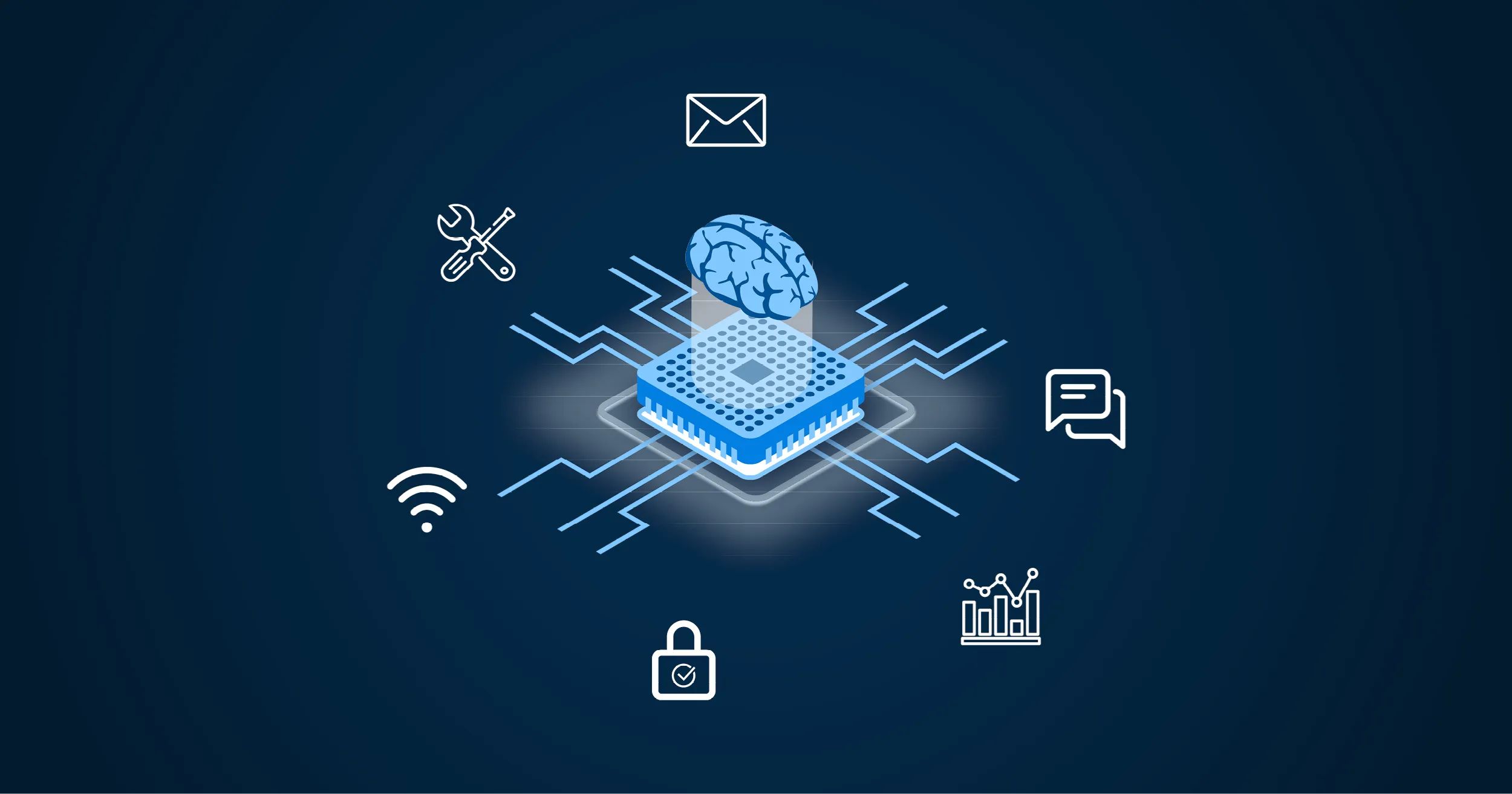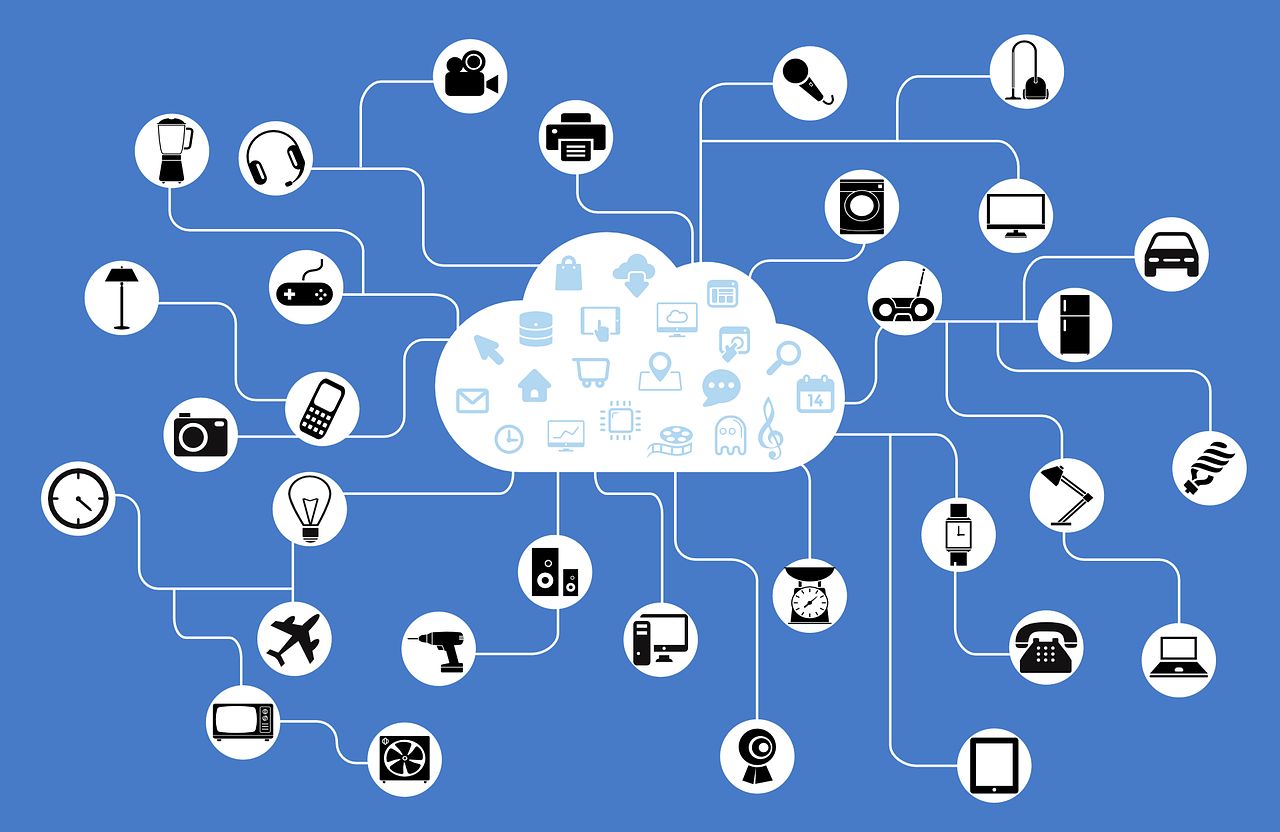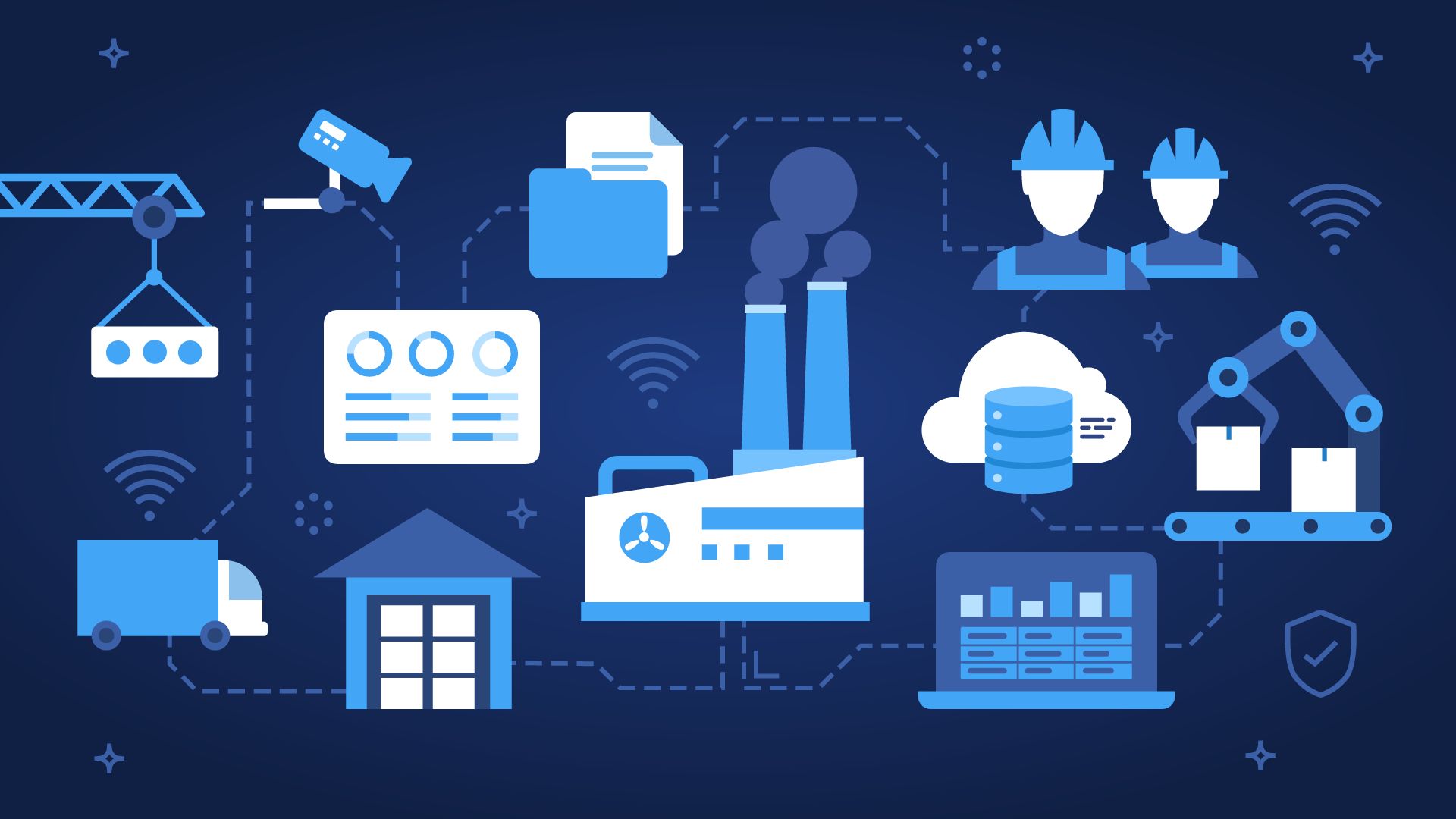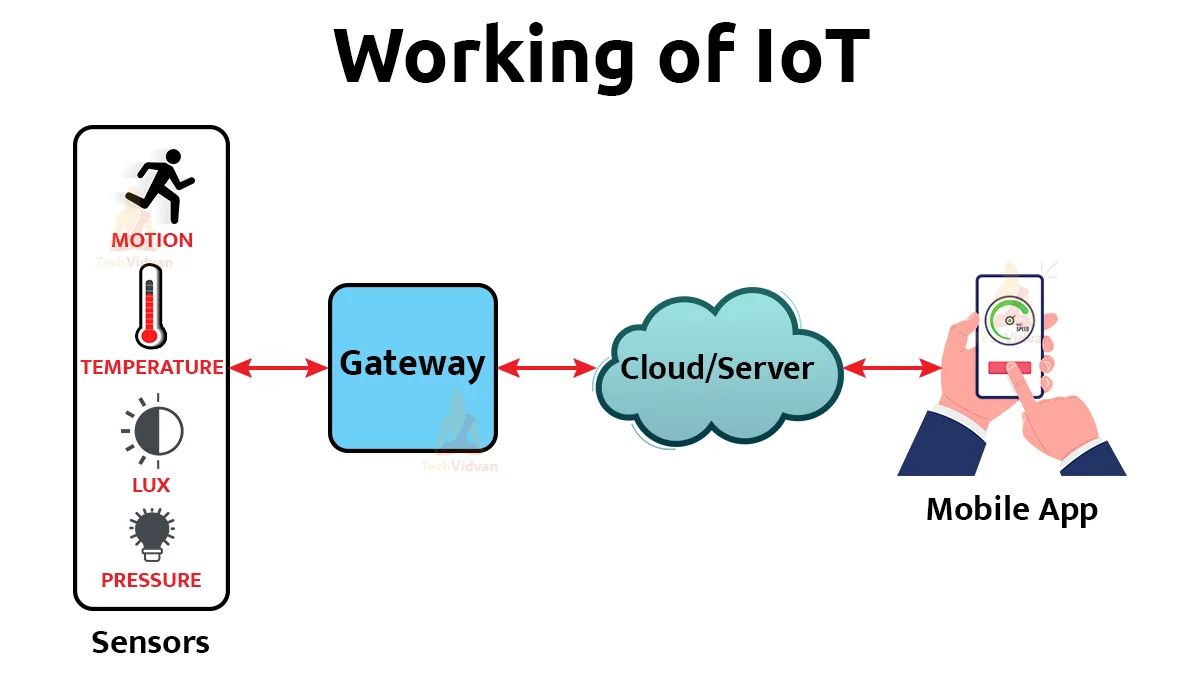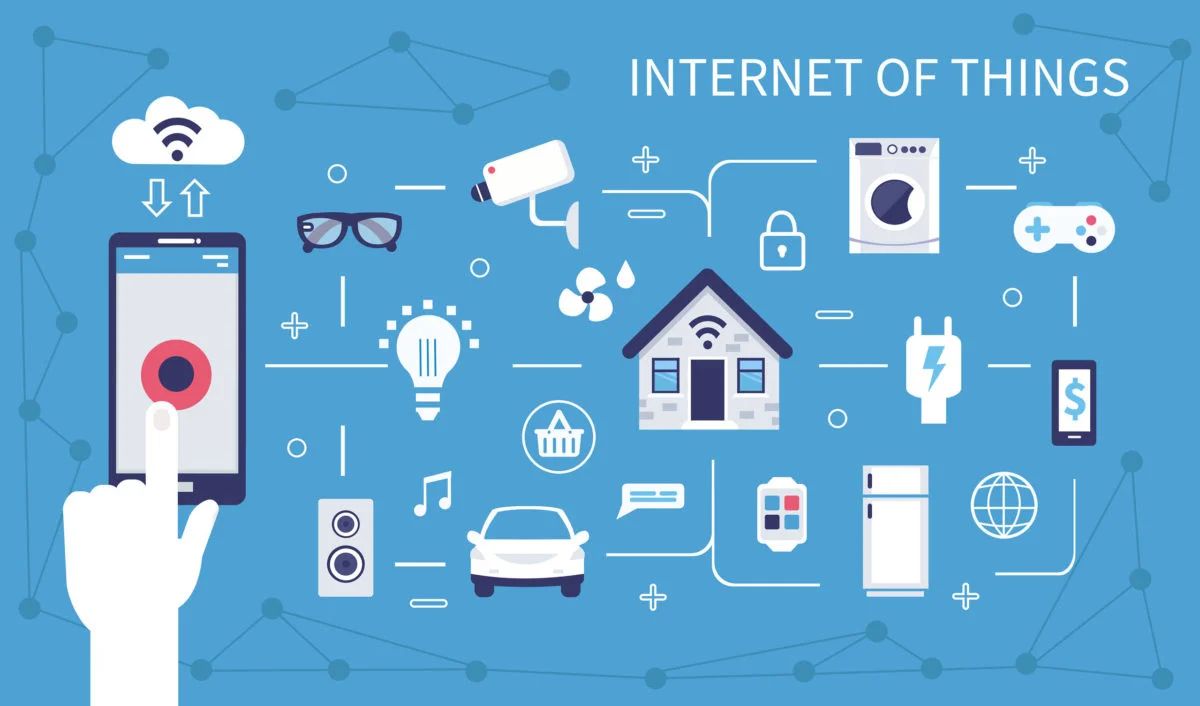Introduction
Over the past decade, embedded computers and the Internet of Things (IoT) have made a significant impact on our daily lives. These technologies have revolutionized the way we interact with the world around us, bringing increased connectivity, convenience, and personalization into our everyday routines. From smart homes to wearable devices, the integration of embedded computers and IoT has transformed how we live, work, and play.
The concept of embedded computers refers to the integration of computing power into everyday objects and systems, making them “smart” and capable of gathering, processing, and communicating data. At the same time, the IoT connects these embedded devices, enabling them to exchange information and perform tasks autonomously.
With increased connectivity, our lives have become more efficient, personalized, and interconnected. We are now able to control various aspects of our homes, monitor our health, and navigate our cities with ease. Additionally, the emergence of intelligent transportation systems and smart cities has further improved our quality of life.
In this article, we will explore how embedded computers and the IoT have impacted various aspects of our daily lives. From the convenience of smart homes to the advancements in healthcare and transportation, these technologies have become integral parts of our modern lifestyle.
Increased Connectivity
One of the significant ways embedded computers and the IoT have impacted our daily lives is through increased connectivity. With the advancement of technology, our devices and appliances can now connect and communicate with each other seamlessly. This interconnectedness has brought numerous benefits and convenience.
Smartphones, tablets, and laptops are now capable of connecting to a wide range of devices and appliances, from smart speakers and thermostats to refrigerators and lighting systems. This connectivity allows us to control and monitor our homes remotely, even when we are away. For example, we can adjust the temperature, turn on the lights, or even check the contents of our fridge through dedicated mobile applications.
The rise of voice assistants, such as Amazon’s Alexa and Google Assistant, has further enhanced connectivity. These intelligent devices can connect to various smart home devices and perform tasks based on voice commands. From playing music and setting reminders to ordering groceries, interacting with our devices has become more intuitive and hands-free.
Moreover, the increased connectivity has paved the way for the Internet of Things to be integrated into our daily lives. Wearable devices, such as smartwatches and fitness trackers, can now connect to our smartphones and provide us with real-time updates on our health and fitness goals. This constant connectivity enables us to track our steps, monitor our heart rate, and receive notifications, improving our overall well-being.
Additionally, the IoT has transformed transportation by connecting vehicles and infrastructure. Advanced car systems can now communicate with traffic lights and navigate efficiently to avoid congestion. This connectivity has the potential to enhance safety on the roads and reduce travel times.
All in all, increased connectivity through embedded computers and the IoT has revolutionized the way we interact with technology. From controlling our homes to monitoring our health, this connectivity has simplified and streamlined our daily lives.
Smart Homes
Embedded computers and the IoT have greatly transformed our homes, turning them into smart and interconnected living spaces. The integration of these technologies in our homes offers numerous benefits, enhancing convenience, security, and energy efficiency.
One of the key advantages of smart homes is the ability to control various aspects remotely. Through mobile applications or voice commands, we can adjust the temperature, turn on or off lights, lock doors, and even monitor security cameras from anywhere in the world. This level of control provides convenience and peace of mind, ensuring that our homes are secure and comfortable.
Smart devices, such as smart thermostats and lighting systems, help optimize energy usage. They can automatically adjust settings based on our preferences, saving energy and increasing efficiency. For instance, smart thermostats can learn our daily routines and adjust the temperature accordingly. This not only reduces energy consumption but also saves money on utility bills.
Another aspect of smart homes is the integration of home entertainment and media systems. With embedded computers and the IoT, we can create immersive experiences by connecting our TVs, audio systems, and streaming services. We can control and stream content from various devices, allowing for a seamless and personalized entertainment experience.
Moreover, smart homes offer enhanced security features. Integrated security systems allow us to monitor our homes through cameras and sensors, receive real-time alerts, and even remotely unlock doors for authorized individuals. This level of security not only gives us peace of mind but also acts as a deterrent against potential intruders.
In addition to convenience and security, smart homes also promote sustainability. By automating energy controls and monitoring systems, we can reduce our carbon footprint and contribute to a more eco-friendly lifestyle.
Overall, smart homes have revolutionized the way we live, providing us with enhanced convenience, energy efficiency, and security. As embedded computers and the IoT continue to advance, the capabilities of smart homes will only expand, making our lives more connected and comfortable.
Wearable Devices
Wearable devices have become increasingly popular, thanks to advancements in embedded computers and the IoT. These devices, such as smartwatches, fitness trackers, and health monitoring devices, have greatly impacted our daily lives, helping us stay connected, track our health, and enhance our overall well-being.
One of the key benefits of wearable devices is their ability to keep us connected and informed. With smartwatches, for example, we can receive notifications, calls, and messages directly on our wrists, eliminating the need to constantly check our smartphones. This connectivity ensures that we never miss important updates or alerts while on the go.
Fitness trackers are another popular wearable device that has transformed the way we approach health and fitness. These devices can monitor our daily activity levels, track steps, distance traveled, and calories burned. They also provide insights into our sleep patterns, helping us understand our sleep quality and make adjustments for better rest. This data-driven approach to fitness motivates us to lead a healthier lifestyle and reach our fitness goals.
Health monitoring devices, such as heart rate monitors and blood pressure monitors, have made it easier for individuals to monitor their health conditions from the comfort of their own homes. These devices can alert users to any anomalies or changes in their vital signs, allowing for early detection of health issues and timely medical intervention. This not only improves personal health management but also reduces the need for frequent doctor visits, saving time and resources.
Furthermore, wearable devices have the potential to revolutionize the healthcare industry. With the ability to collect and transmit real-time health data, these devices can provide valuable insights to medical professionals for remote patient monitoring and diagnosis. This can lead to more personalized and efficient healthcare delivery, especially for individuals with chronic conditions.
As embedded computers and the IoT continue to advance, wearable devices will become even more sophisticated, offering new ways to monitor our health, stay connected, and improve our well-being. From monitoring stress levels to detecting early signs of diseases, wearable devices have the potential to revolutionize how we approach our health and live our lives.
Health Monitoring
The integration of embedded computers and the IoT has had a profound impact on health monitoring, revolutionizing how we track and manage our well-being. These technologies have brought about a new era in healthcare, enabling individuals to monitor their health in real-time and make informed decisions about their lifestyle and medical treatments.
One of the key benefits of health monitoring devices is their ability to provide continuous data collection. Devices such as fitness trackers, smartwatches, and health monitoring apps can keep track of a wide range of health metrics, including heart rate, blood pressure, sleep patterns, and even blood glucose levels for individuals with diabetes. This continuous monitoring allows individuals to have a better understanding of their health and detect any potential issues early on.
Furthermore, health monitoring devices offer the convenience of remote patient monitoring. Medical professionals can analyze the data collected by these devices to monitor patients’ health remotely, reducing the need for frequent in-person visits and allowing for more personalized care. This is especially valuable for individuals with chronic conditions or those recovering from medical procedures.
The real-time nature of health monitoring devices enables timely intervention and early detection of health problems. For example, if a person’s heart rate spikes to abnormal levels, the device can alert them to seek medical attention or take appropriate actions. This proactive approach to health management can prevent complications and improve overall well-being.
In addition to individual health monitoring, embedded computers and the IoT have also paved the way for population health monitoring. By aggregating anonymous data from various individuals, healthcare professionals can gain insights into health trends and develop targeted interventions to improve public health. This data-driven approach to population health management holds promise for preventing disease outbreaks and improving healthcare policies.
Overall, health monitoring through embedded computers and the IoT has transformed how we manage our health. These devices provide us with valuable insights, enable remote patient monitoring, and empower individuals to take control of their well-being. As technology continues to advance, we can expect more sophisticated health monitoring solutions that will further revolutionize healthcare delivery.
Improved Transportation
Embedded computers and the IoT have had a significant impact on transportation, improving efficiency, safety, and overall convenience. These technologies have revolutionized how we travel, making our journeys smoother, more connected, and sustainable.
One of the key advancements in transportation is the integration of intelligent transportation systems (ITS). ITS utilizes embedded computers and the IoT to create a network of connected vehicles, infrastructure, and traffic management systems. This connectivity enables real-time communication, data exchange, and decision-making, leading to improved traffic flow, reduced congestion, and enhanced safety.
Connected vehicles can communicate with one another and with the surrounding infrastructure, facilitating efficient routing and providing valuable safety information to drivers. For example, vehicles can receive real-time updates on traffic conditions, road hazards, and weather conditions, enabling them to navigate more effectively and avoid potential dangers.
Furthermore, embedded computers and the IoT have enabled the development of smart parking systems. These systems use real-time data to guide drivers to available parking spots, reducing the time wasted searching for parking and alleviating traffic congestion. Additionally, smart parking systems can provide information on parking availability to optimize parking space utilization, leading to more efficient use of urban areas.
Public transportation has also benefited from these technologies. Integrated ticketing systems, such as contactless payment systems and mobile ticketing apps, have improved the ease of use and convenience of public transportation. Commuters can now pay for fares using their smartphones or smart cards, reducing the need for physical tickets and allowing for seamless transfers between different modes of transportation.
Moreover, embedded computers and the IoT have paved the way for the development of autonomous vehicles. These vehicles use advanced sensors, connectivity, and artificial intelligence to navigate and operate without human intervention. Autonomous vehicles have the potential to revolutionize transportation by reducing traffic accidents, improving fuel efficiency, and optimizing traffic flow.
Overall, improved transportation through embedded computers and the IoT has transformed how we navigate our cities. From real-time traffic information to smart parking solutions and the future promise of autonomous vehicles, these technologies are making our journeys more efficient, safe, and connected.
Smart Cities
Embedded computers and the IoT have played a significant role in the development of smart cities, transforming urban environments into interconnected and sustainable hubs. These technologies have the potential to enhance various aspects of city life, including transportation, energy usage, waste management, and public safety.
One of the key benefits of smart cities is the improvement of transportation infrastructure. Embedded computers and the IoT enable real-time traffic monitoring, leading to optimized traffic flow and reduced congestion. Advanced transportation systems can also provide commuters with accurate travel information, suggesting alternative routes and modes of transportation to save time and reduce environmental impacts.
Energy usage is another area where smart cities are making a difference. With the help of embedded computers and the IoT, cities can monitor and manage energy consumption more efficiently. Smart grids and energy management systems can analyze data from various sources to ensure a balance between energy supply and demand. This results in reduced energy waste, lower utility costs, and a more sustainable approach to energy usage.
Waste management is another area where smart cities have made significant advancements. Embedded sensors and connectivity enable real-time monitoring of waste levels in bins and optimize waste collection schedules. This reduces unnecessary pickups, optimizes resources, and ensures a cleaner and healthier urban environment.
Public safety is a paramount concern in any city, and embedded computers and the IoT have greatly improved city surveillance and emergency response systems. Smart cities utilize CCTV cameras, sensors, and data analytics to enhance security monitoring and response times. Automated systems can detect potential threats, spot anomalies, and send alerts to relevant authorities, improving overall public safety.
Furthermore, smart cities promote citizen participation and engagement through the use of digital platforms and mobile applications. These platforms allow residents to provide feedback, report issues, and access various city services conveniently. Through these channels, city administrators can gather valuable insights, address citizen concerns promptly, and foster a sense of community and collaboration.
Overall, embedded computers and the IoT play a vital role in the development of smart cities. By integrating these technologies, cities can enhance transportation, energy usage, waste management, public safety, and citizen participation. As cities continue to grow and face new challenges, the continued advancement of smart city technologies will be crucial in creating sustainable, livable, and connected urban environments.
Enhanced Personalization
Embedded computers and the Internet of Things (IoT) have brought enhanced personalization into our daily lives, revolutionizing the way we interact with technology and the world around us. These technologies utilize data collection, analysis, and artificial intelligence to tailor experiences and services to our individual preferences, enhancing convenience, efficiency, and overall satisfaction.
One area where enhanced personalization is evident is in the realm of digital content and entertainment. Streaming services, social media platforms, and online retailers utilize algorithms and user data to recommend personalized content, products, and services. This ensures that we are presented with options that align with our interests and preferences, saving time and enhancing our overall experience.
Moreover, embedded computers and the IoT have facilitated the development of smart home devices that can understand and adapt to our individual needs. Personalized settings for lighting, temperature, and entertainment can be automatically adjusted based on our preferences and daily routines. This creates a more comfortable and seamless living environment that caters to our specific preferences and lifestyle.
Personalized healthcare and fitness tracking have also been greatly enhanced through embedded computers and the IoT. Wearable devices and health monitoring apps can collect data on our health metrics, analyze patterns, and provide personalized insights and recommendations. For instance, based on our activity levels and sleep patterns, these devices can suggest specific exercises or sleep routines that align with our specific goals and preferences.
Additionally, the rise of virtual assistants, such as Amazon’s Alexa and Google Assistant, have furthered personalization in our everyday lives. These intelligent devices can learn our preferences and routines, enabling them to provide personalized responses and suggestions. From organizing our schedules and managing our tasks to recommending recipes or providing news updates, virtual assistants strive to understand and cater to our individual needs.
Enhanced personalization has also permeated the realm of retail and customer service. E-commerce platforms and online retailers utilize data analytics and personalized recommendations to offer tailored shopping experiences. They can suggest products based on our browsing history, past purchases, and preferences, making the online shopping experience more convenient and enjoyable.
Overall, the incorporation of embedded computers and the IoT in our daily lives has brought about enhanced personalization. From tailored content and entertainment to personalized healthcare and smart home devices, these technologies strive to understand and cater to our individual preferences, creating a more seamless, efficient, and satisfying experience in various aspects of our lives.
Efficient Energy Usage
Embedded computers and the Internet of Things (IoT) have made it possible to achieve more efficient energy usage, leading to cost savings, reduced environmental impact, and a more sustainable future. These technologies enable the collection, analysis, and management of energy data, allowing for smarter and more optimized energy consumption.
One of the significant advancements in efficient energy usage is the implementation of smart grids. Smart grids utilize embedded sensors, real-time data monitoring, and two-way communication to optimize the distribution and consumption of electricity. These grids can detect fluctuations in demand, avoid network congestion, and balance energy supply from renewable and traditional sources efficiently.
With the help of embedded computers and the IoT, energy management systems have also become more sophisticated. These systems can collect and analyze data on energy consumption patterns, allowing consumers and businesses to make informed decisions about their energy usage. This data-driven approach helps identify energy-saving opportunities, such as adjusting temperature settings, optimizing appliance schedules, and identifying energy-intensive activities.
Furthermore, the integration of smart meters in homes and businesses enables real-time monitoring of energy usage. Smart meters provide consumers with detailed information about their electricity consumption, allowing them to identify patterns and make adjustments accordingly. This level of visibility encourages energy-efficient behaviors and empowers individuals to take control of their energy consumption.
In addition to smart grids and meters, the IoT enables the development of connected devices and appliances that optimize energy usage. For example, smart thermostats can learn our preferences, adjust temperature settings based on occupancy, and optimize energy consumption accordingly. Smart lighting systems can automatically turn off lights in unoccupied rooms and adjust brightness levels based on natural light intensity. These devices contribute to significant energy savings, reducing both carbon emissions and utility costs.
The advancement of energy storage technologies, such as smart batteries and home energy storage systems, further enhances efficient energy usage. These systems enable consumers to store excess energy during off-peak hours and use it during peak-demand periods, reducing reliance on the grid and optimizing energy consumption. Additionally, energy storage systems allow for better integration of renewable energy sources, such as solar and wind, by storing excess energy for use when these sources are not readily available.
Overall, embedded computers and the IoT have revolutionized the way we consume and manage energy, leading to more efficient energy usage. Smart grids, energy management systems, connected devices, and energy storage technologies all contribute to reducing our carbon footprint, optimizing energy consumption, and creating a more sustainable future.
Enhanced Safety and Security
Embedded computers and the Internet of Things (IoT) have significantly enhanced safety and security in various aspects of our lives. These technologies have revolutionized how we protect our homes, monitor public spaces, and respond to emergencies, bringing about a greater sense of safety and peace of mind.
One of the key contributions of embedded computers and the IoT to safety and security is in the field of home security systems. Smart home security devices, such as connected cameras, motion sensors, and door/window sensors, provide real-time monitoring and notifications. Homeowners can remotely access their security system through mobile applications, enabling them to check on their homes, receive alerts, and even remotely control locks and alarms. This level of connectivity and control helps deter burglaries and provides homeowners with a heightened sense of security.
Furthermore, the integration of these technologies in urban environments has enhanced public safety. Surveillance cameras equipped with embedded computers and sensors can monitor public spaces in real-time, allowing for the early detection of suspicious activities and rapid response to potential threats. Additionally, these systems can analyze patterns and identify unusual behavior, contributing to proactive crime prevention.
Emergency response systems have also been greatly improved through the use of embedded computers and the IoT. For example, smart fire detection and suppression systems can automatically detect fires, alert residents, and activate fire suppressants. These systems can also notify emergency services, enabling a quicker response and reducing the potential for property damage and loss of life.
Moreover, embedded computers and the IoT have revolutionized the way emergency services are coordinated and deployed. Emergency response centers can receive real-time data from various sources, such as traffic cameras, weather sensors, and citizen alerts, allowing for better decision-making and faster response times. This enhanced coordination and communication significantly improve emergency response and help save lives.
Additionally, wearable devices equipped with embedded computers and the IoT can contribute to personal safety. For example, personal safety devices can send distress signals to emergency contacts or authorities in case of an emergency. These devices can also incorporate GPS technology to track the location of individuals in distress, improving search and rescue efforts.
Overall, embedded computers and the IoT have revolutionized safety and security by providing real-time monitoring, advanced analytics, and improved emergency response systems. These technologies have contributed to a greater sense of safety in our homes, public spaces, and during emergencies, making our lives more secure and providing peace of mind.
Conclusion
The integration of embedded computers and the Internet of Things (IoT) has transformed our daily lives in numerous ways. From increased connectivity to enhanced personalization, these technologies have revolutionized how we interact with the world around us, bringing convenience, efficiency, and improved quality of life.
Embedded computers and the IoT have connected our devices, allowing for seamless control and monitoring of our homes, even from a distance. We can adjust the temperature, monitor security cameras, and control lighting systems with a simple tap on our smartphones or through voice commands. This connectivity has made our lives more efficient and provided us with greater control over our environments.
Wearable devices, powered by embedded computers, have become essential companions in tracking our health and fitness goals. They provide us with real-time data on our heart rate, sleep patterns, and physical activities, helping us make informed decisions about our well-being. These devices have transformed how we approach health monitoring and enable us to take charge of our own health.
Transportation has also witnessed significant improvements through embedded computers and the IoT. From intelligent transportation systems that enhance traffic flow and optimize routes to smart parking systems that guide us to available spaces, these technologies have made our journeys more efficient and convenient.
Smart cities, driven by embedded computers and the IoT, have emerged as sustainable and connected urban environments. These cities optimize energy usage, improve waste management, and enhance public safety through the integration of sensors, data analytics, and smart infrastructure. They provide citizens with a more efficient and pleasant urban experience.
With enhanced personalization, our devices and services are tailored to our individual preferences, making them more intuitive and convenient. From personalized recommendations on streaming platforms and online shopping to personalized healthcare and smart home devices, these technologies improve our overall satisfaction and efficiency.
Efficient energy usage has also been facilitated through embedded computers and the IoT. Smart grids, energy management systems, and connected devices enable us to optimize our energy consumption, reduce waste, and contribute to a more sustainable future.
Finally, embedded computers and the IoT have greatly enhanced safety and security in various aspects of our lives. From smart home security systems and real-time surveillance in public spaces to improved emergency response systems, these technologies have made us feel more secure and provided us with peace of mind.
In conclusion, embedded computers and the Internet of Things have had a profound impact on our daily lives. They have brought us increased connectivity, personalized experiences, enhanced safety and security, efficient energy usage, and improved transportation. As these technologies continue to advance, we can expect further innovations and improvements that will shape the way we live, work, and interact with our surroundings.







